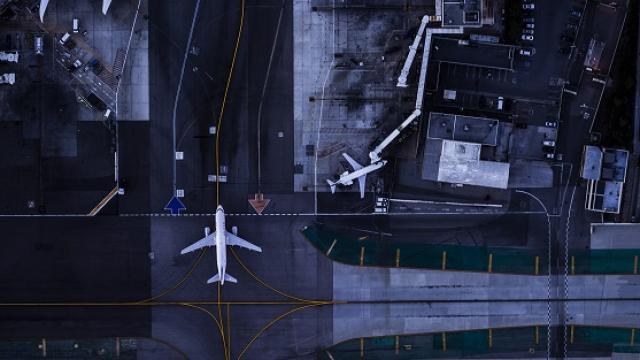Press Release
International airfares lose altitude as capacity and competition take off
New data from Flight Centre’s flagship corporate divisions, FCM Travel and Corporate Traveller, has revealed average international outbound Economy air fares across all carriers have decreased by 12.9 per cent in the second half of 2023, compared to the same period in 2022, equating to an average saving of $280 per ticket.
Flight Centre Corporate reported all cabin classes followed suit, with Business Class fares decreasing by 7.99 per cent - or down by $834 - and First Class fares dropping by 8.02 per cent (a saving of $1,282) during the same period.
Flight Centre Corporate MD for ANZ/Global FCM COO Melissa Elf said the softening of airfares was a welcome relief for travellers, which had a direct impact on the bottom line of Australian businesses.
“We’ve spent some time now assuring our corporate travellers that as airlines continue to recover, as capacity and competition comes back to the network, our travellers would start to see the cost of travel drop,” Ms Elf said.
“We’re starting to see the signs of exactly that – and although we’ve still got some way to go yet in terms of getting back to full capacity, particularly internationally, there’s no doubt we’re beginning to feel the positive effects.”
Flight Centre Corporate analysed the fare prices on key routes. It found Economy flights into Hong Kong from Australia recorded the highest rates of relief, at -35.75 per cent. This was followed by New Zealand (-23.57 per cent), Singapore (-15.65 per cent), and the United States (-16.06 per cent).
Hong Kong was also the biggest winner for Business Class fare drops, at -23.83 per cent, due to the removal of quarantine requirements for international entrants in September 2022. Prices dropped significantly once this came into effect, reflecting the decline in fares in 2023.
This was followed by the United States at -11.07 per cent drop in Business Class airfares, Canada at -10.58 per cent and Germany at -8.67 per cent.
First Class fares into the United States of America showed the greatest drop with the average fare down by -14.8 per cent.
Ms Elf said there was a direct correlation between regions that were adding and welcoming airline capacity and the cost of travel decreasing.
“Our data shows that Southeast Asia is back to 107 per cent capacity on pre-2019 levels, and it’s clear that more flights and more competition has led to the significant drop in airfares that we’re seeing into countries like Hong Kong and Singapore,” she said.
“There’s more room for prices to drop to destinations like the Middle East, New Zealand, and North America, for example, which are at pre-2019 capacity levels of 81 per cent, 86 per cent and 91 per cent respectively.
“There’s still restricted capacity on European flights and that’s the last frontier we need to conquer for customers to feel relief on routes to the likes of the United Kingdom, France, and Italy – this is evidenced by softer airfare decreases to these destinations.
“With demand into Europe high, it’s critical more flights and competition are added, with the recent announcement like the granting of slots to Turkish Airlines being exactly what the industry needs for prices to drop even further.
“The good news is Flight Centre Corporate is anticipating pre-2019 capacity to return domestically next month, with international capacity looking to follow suit by mid-2024.”
Ms Elf said corporate travel was essential for businesses to win new business, attend conferences, events, and meetings, and retain staff.
“The fact that corporate travel has remained in high demand throughout a period of high prices shows it continues to be a necessity for business success and survival,” she said.
“It also proves just how critical it is to have a travel management company on your side that can find you the best deal across a multitude of airlines, lock in the most convenient route, advise on the best time to travel and maximise travel benefits.
“Studies show that business travel correlates to economic growth[1], so with this welcome news, and as economists predict the flattening of inflation – particularly as we approach quarterly inflation results later this month – we can expect to see activity in corporate travel build.”
Average airfare price by cabin class in July-December 2023, and the cost change of fares, compared to July-December 2022
|
|
Average airfare in July-December 2023 (international) |
Percentage change in fare in July-December 2022 compared to July-December 2023 |
Dollar savings July-December 2022 compared to July-December 2023 |
|
Economy |
$1,891 |
-12.9% |
$280 |
|
Business Class |
$9,616 |
-7.99% |
$834 |
|
First Class |
$14,708 |
-8.02% |
$1,282 |
Percentage change in average fare prices from outbound travel into key international destinations, comparing July-December 2022 against July-December 2023
|
|
Economy Class |
Business Class |
|
Hong Kong |
-35.75 |
-23.83 |
|
New Zealand |
-23.57 |
-3.21 |
|
Singapore |
-16.06 |
-4.07 |
|
United States of America |
-14.88 |
-11.07 |
|
United Arab Emirates |
-10.79 |
-1.28 |
|
United Kingdom |
-7.76 |
-6.4 |
|
Italy |
-6.9 |
-1.73 |
|
Canada |
-6.51 |
-10.58 |
|
France |
-6.76 |
-3.43 |
|
Germany |
-5.59 |
-8.76 |


